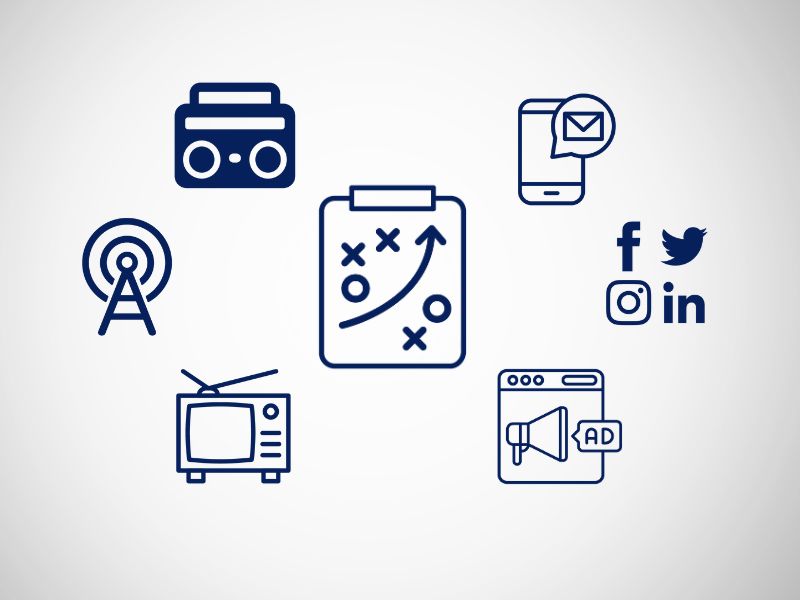
The Power of Programmatic Advertising: How Programmatic Buying Works

Previously in our Power of Programmatic series, we dived into the what, the where, the why, and now…drumroll please…. We’re jumping into the how.
To paraphrase Olivia Newton-John, “Let’s get technical, technical.” Okay, I probably just aged myself with that 80’s pop culture reference, but this installment is about to get down into the gritty details of how programmatic buying really works.
Once you understand the “how,” you’ll have a much better handle on where your ad dollars could potentially be invested and how your message is reaching your desired audience.
The Programmatic Landscape
In Programmatic 101, we touched on the programmatic landscape, at a high level. Here’s a little visual refresher:

Demand Side Platforms (DSPs)
A Demand Side Platform (DSP) is a technology platform that allows advertisers to purchase and manage digital advertising inventory in real-time through automated processes. There are many different Demand Side Platforms (DSPs) out there, and each one has its own unique set of capabilities that you, as a marketer, may find intriguing for your advertising needs. There are even DSPs that specialize in specific types of inventory, which refers to the available space or opportunities on digital platforms where ads can be displayed like Connected TV, for example.
Each DSP typically has access to multiple SSPs (Supply Side Platforms). These allow buyers to have access to a plethora of readily available inventory. This level of inventory is typically available to all buyers and often referred to as “open market inventory.” The DSP negotiates the floor price CPM (Cost Per 1000) at which all buyers are able to programmatically bid on the publishers’ inventory.
The agency and DSP you choose can have a significant impact on your advertising capabilities and partnerships. Each DSP has special relationships with Publishers and Supply Side Platforms (SSPs). These relationships can often have perks, such as early access to specific media types or inventory availability for its buyers.
Supply Side Platforms (SSPs) and Ad Exchanges
SSPs aggregate publisher inventory and make it readily available to DSPs via ad exchanges. Ad Exchanges are like a digital market place where inventory is made available to buyers, and where publishers can make their inventory available. Different SSPs have access to different publisher inventories, in the same way that DSPs have access to different SSPs. (Hang with me, I know it’s a little much with the acronyms). Publishers will be selective about which exchanges they choose to offer their inventory.
Programmatic Inventory Types
There are different types of programmatic inventory available to buyers within their DSP. Depending on the KPIs of a campaign a buyer may choose to run:
· Open market buying: ads run across a DSP’s open web and in-app inventory in a publisher-agnostic fashion.
· DSP-created Private Marketplace (PMP) deals: any buyers within the DSP have access to pre-negotiated “evergreen” deals with premium publishers.
· Curated PMP deals: Buyers work directly with publishers to have private marketplace deals created especially for their advertisers. PMPs often have the publisher’s layer on targeting, enabling buyers to bid on a more qualified group of users.
· Programmatic Guaranteed deals: unlike other types of programmatic buying, the buyer assigns a specific dollar amount at a fixed rate for each specific deal.
Direct Buying and Private Marketplace
Direct Buys
There is one more way for digital inventory to be purchased. Direct Buys are negotiated directly with publishers, at fixed rates and fixed spends. These types of buys rely on publishers to perform any optimizations necessary within the campaign and they are not typically run though DSPs.
Programmatic Guaranteed Deals
Programmatic Guaranteed (PG) deals are a blend of direct buying and private marketplace deals.
Like direct buying:
· An agreement is made between an advertiser and a publisher to buy specific number of impressions and dollars at a rate over a period of time.
· Direct buys are typically run with an insertion order. PG deals do not need an insertion order, but the publisher is required to reserve the agreed upon inventory for the advertiser in their ad server. This is how delivery is guaranteed.
· All arrangements – targeting, pacing, frequency, etc. – must be outlined before the deal is negotiated so the publisher has the info needed to create a customized deal.
Like Private Auction/Marketplace deals:
· An advertiser must negotiate a deal that can be executed through the DSP.
· Advertiser/buyers work with a publisher to get access to custom executions (creative, specific content, first-party data, and inventory, etc) that aren’t available on the open exchange.
What Next?
Okay, that was a lot. I know there are oodles of acronyms when you get down in the programmatic weeds. But there’s a lot of good to be found there. And we can help.
Suffice to say, our clients love the flexibility of Programmatic Marketplace and Programmatic Guaranteed deals. They offer the perfect blend of premium inventory with unified targeting and measurement.
Next Up: Deeper Dive Into the Benefits of Programmatic Buying
Click here for the next installment of this series where we walk through the deeper benefits of running digital campaigns programmatically.



.jpg)
